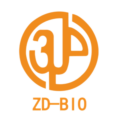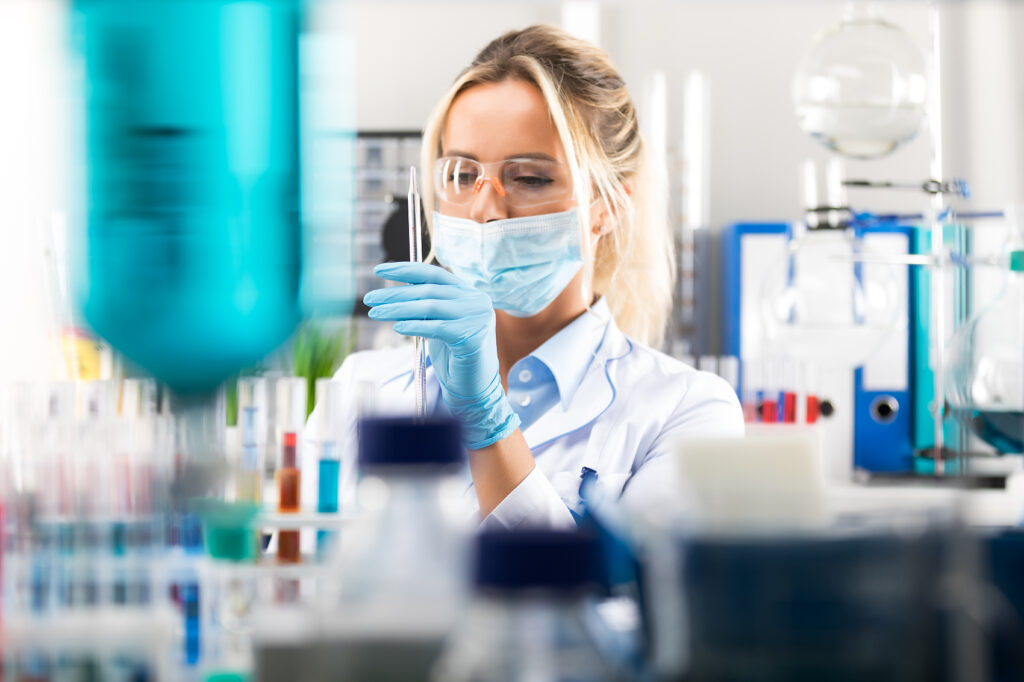In the complex process of semiconductor manufacturing, photoresist cleaning is a crucial step to ensure chip quality. Even the tiniest residual particles or metal ions on the surface of the photoresist can cause significant issues in subsequent processes such as lithography and etching. These contaminants may alter the photosensitive properties of the photoresist, leading to pattern deformation, blurriness, or dimensional deviations, ultimately affecting the chip’s circuit structure and performance. As advanced semiconductor manufacturing pushes line widths down to the nanometer scale, the cleanliness requirements for photoresists have reached unprecedented levels.
Butyl lactate has emerged as an ideal choice for cleaning photoresists due to its unique advantages. With extremely high purity and minimal impurity content, it effectively prevents new contaminants from being introduced during cleaning. Its low metal content is particularly critical for semiconductor processes that are highly sensitive to metal ions. Even trace amounts of metal ions can form conductive pathways inside the chip, compromising its electrical performance and potentially leading to short circuits. Another reason for butyl lactate’s increasing popularity is its safety profile. Compared with traditional cleaning solvents, it is less toxic, has lower volatility, poses minimal health risks to operators, and reduces environmental pollution. In practical applications, butyl lactate can quickly and effectively dissolve and remove various organic contaminants from the surface of photoresists, such as photoresist residues and grease, without damaging the photoresist itself. This ensures that the material’s performance and quality remain unaffected.
A Key Assistant in Lithography Processes
Lithography is a core step in semiconductor manufacturing, playing a pivotal role in the industry. It is akin to drawing a precision map in the microscopic world, accurately transferring the designed circuit pattern onto the wafer surface, laying the foundation for subsequent chip fabrication. The precision of the lithography process directly determines chip performance and integration, making it a key driver of semiconductor technology advancement.
Butyl lactate plays an indispensable role in various stages of the lithography process. During photoresist coating, it helps evenly spread the photoresist onto the wafer surface, forming a uniform and stable photoresist film. As an excellent solvent for photoresists, butyl lactate adjusts the viscosity and flowability of the photoresist, ensuring precise control over film thickness and uniformity. Proper viscosity and flowability allow the photoresist to better fill microscopic surface structures on the wafer, preventing defects such as bubbles and streaks, thereby improving the accuracy and quality of lithographic patterns.
In the development stage, butyl lactate also plays a critical role. The development process removes unexposed portions of the photoresist, forming precise circuit patterns on the wafer surface. As a component of the developer solution, butyl lactate chemically interacts with the photosensitive components in the photoresist, dissolving and removing the unexposed photoresist while preserving the exposed areas. Its dissolution properties and reactivity are well-balanced, ensuring both the speed and accuracy of development. If a developer solution is too aggressive, it may over-dissolve the exposed photoresist, causing pattern distortion or size reduction. Conversely, if its dissolution capability is too weak, unexposed photoresist may not be completely removed, compromising pattern clarity and precision. The presence of butyl lactate makes the development process more stable and controllable, aiding in the high-precision transfer of patterns.
High Purity and Low Metal Content
In the semiconductor industry, where extreme precision is essential, material purity and metal content are critical to product performance and quality. Semiconductor components are incredibly small, and even trace amounts of impurities or metal ions can significantly impact electron transmission and device functionality. For instance, in a transistor within a chip, impurities can alter its electrical characteristics, slowing switching speeds, increasing leakage currents, and reducing the chip’s overall performance and stability.
Butyl lactate excels in purity and metal content control. With advanced production techniques and rigorous quality control systems, its purity reaches exceptionally high standards, effectively minimizing the risk of impurities affecting semiconductor performance. During photoresist dissolution, high-purity butyl lactate ensures uniform dissolution, preventing impurity-induced particles or clusters that could degrade pattern accuracy and quality. Its low metal content ensures that semiconductor manufacturing does not introduce unwanted metallic contaminants, preserving the electrical performance and reliability of chips. Research indicates that semiconductor processes using butyl lactate as a solvent achieve significantly higher chip yield rates compared to those using traditional solvents, further proving its advantages in high-purity applications.
Environmental and Safety Advantages
Amid growing global emphasis on sustainability, the semiconductor industry is actively seeking safer and more environmentally friendly production solutions. Traditional semiconductor manufacturing processes often rely on solvents such as benzene, toluene, and xylene, which pose environmental and health hazards. These solvents are volatile, contributing to air pollution, and their toxicity can lead to severe health risks for operators, including neurological and hematological disorders with prolonged exposure.
As an environmentally friendly solvent, butyl lactate offers distinct advantages. It is biodegradable and can be broken down by microorganisms in nature, preventing long-term accumulation in soil, water, or air—unlike conventional solvents. Additionally, butyl lactate has low toxicity and poses minimal health risks to workers. Its use in semiconductor manufacturing reduces exposure to harmful substances, improving workplace safety. From a long-term perspective, using butyl lactate aligns with the semiconductor industry’s sustainability goals, helping companies mitigate environmental risks, reduce social responsibility costs, and enhance corporate reputation and competitiveness.
Excellent Solubility and Volatility
In semiconductor manufacturing, the solubility and volatility of solvents are key factors influencing production efficiency and product quality. Photoresists must be evenly coated onto wafer surfaces and dried under controlled conditions to form precise circuit patterns. This requires solvents that can rapidly dissolve photoresists for easy application while also evaporating at a controlled rate to facilitate efficient drying and solidification.
Butyl lactate exhibits outstanding solubility and volatility. It is highly compatible with various photoresist materials, allowing for quick and effective dissolution. This ensures that the photoresist spreads uniformly across the wafer, forming a consistent film thickness. During development, butyl lactate efficiently dissolves unexposed photoresist, ensuring accurate and rapid development. Its volatility is well-balanced—not too fast to cause uneven coating, nor too slow to hinder production efficiency. After photoresist coating, it evaporates at an optimal rate, allowing for rapid solidification and setting the stage for subsequent lithography and etching processes. This balance of solubility and volatility makes butyl lactate an essential material in semiconductor manufacturing, enhancing both efficiency and product quality.
As environmental regulations in the semiconductor industry become more stringent, butyl lactate’s eco-friendly properties will provide it with a significant competitive advantage. In the future, using sustainable materials will become a key industry trend, and butyl lactate is poised to replace some traditional organic solvents, becoming a mainstream choice in semiconductor manufacturing.
Conclusion
From photoresist cleaning to various stages of the lithography process, butyl lactate plays a crucial role in ensuring high-quality semiconductor production. It not only enhances chip performance and yield rates but also aligns with the industry’s environmental sustainability goals, contributing to responsible semiconductor manufacturing.
Looking ahead, as the semiconductor industry continues its rapid expansion and as emerging technologies drive increasing demand for semiconductors, the application potential of butyl lactate will grow even further. With ongoing research and innovation, butyl lactate is expected to play an even greater role in semiconductor manufacturing, driving technological progress, fostering industry advancements, and injecting new vitality into the field.

